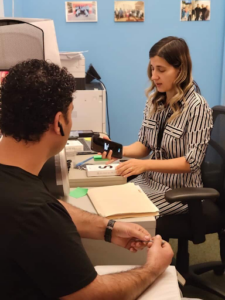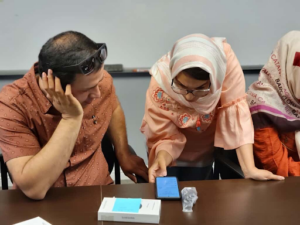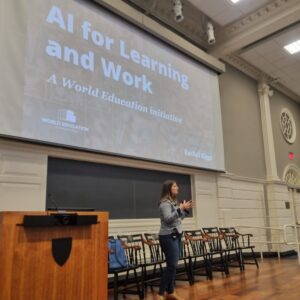
By Jerry Yamashita and Alison Ascher Webber, World Education, Inc.
With generous support from AT&T for Community Based Digital Navigators, World Education, Inc. is working to support diverse organizations across the country to design and offer effective digital navigator services in diverse communities, including at AT&T Connected Learning Centers in Dallas, TX; Detroit, MI; Los Angeles, CA; Tupelo, MS; and Rincon Reservation in Valley Center, CA.
Though most organizations understand how lack of access to devices, the internet, and digital skills impede community members’ abilities to pursue their goals, they often don’t have sufficient structures in place to support individuals with their digital inclusion needs, such as accessing healthcare, education, and employment opportunities or helping children with homework.
For this reason, many organizations in the past few years have adopted the Digital Navigator services model for providing individualized, flexible support at scale to individuals as they learn to navigate online platforms. Those that have invested in this model to close digital divides have found great impact—with every $1 spent, there is a projected $2.40 in social ROI in value to participants, their children, and taxpayers.
Digital Navigators can be the first line of support in helping community members get internet access, free or affordable devices, just-in-time technical assistance, and learn digital skills. Accessible in person, by phone, or virtually, they can be a one-stop hub for making referrals to diverse services and facilitating enrollment and successful onboarding to digital literacy training and other upskilling opportunities. Digital Navigator services should be available at times and locations that are convenient to participants and, ideally, at places they already frequent.
Digital Navigator services include but are not limited to:
- information about low-cost internet access options
- information about free, low-cost, or refurbished devices
- technical support to accomplish immediate and long-term goals
- supports for developing foundational digital literacy skills
- referrals to online or in-person digital literacy programs, job training, educational opportunities, or other options to help learners meet their individual goals.

As a Digital Navigator, I help students learn how to get online, how to be responsible online, and how to be prepared for the workforce, online collaboration, and connection to the digital world.” —Ana H., a Digital Navigator in California who is originally from Moldova and supports learners in English, Russian, and Romanian.
Digital navigation services offer immediate assistance with affordable internet access, device acquisition, technical skills, and application support—but they should also include following the individual from task-focused tech support to identifying and achieving long-term digital learning goals.
Research by the University of Washington found that services have the greatest impact when they are offered by organizations and individuals who are already trusted by the community and who have experience working within its demographics, notably in terms of culture and language.
Rather than offered as a standalone service, Digital Navigator services are most effective when they are co-designed with the community and embedded into existing services, such as employment assistance, healthcare, K-12 and adult education, afterschool programs, food pantries, libraries, laundromats, and community centers.

I’m a mother of five children trying to obtain my GED so that I can go to college. I was never given a computer to learn how to use one. I am grateful for this program to teach me the basic things to use technology.” —JoBeth B., a student at Sitting Bull College, a Tribal College located on the Standing Rock Reservation in North and South Dakota that is guided by Lakota/Dakota culture, values, and language.
Digital Navigators can be trained and dedicated staff, or people for whom it is a component of their job to provide other services such as in health or education. Digital Navigators can also be volunteers, and programs are finding success in training and using peer digital navigators with similar, lived experiences of having to overcome digital divides.
Digital Navigators should possess cultural competency and language skills that are reflective of the demographics they serve. Services that are offered in participants’ primary or preferred language are most effective at helping clients overcome technology-based barriers and at preparing them to engage in essential digital activities such as a job search, online learning, or telehealth.

Many older students lack access to digital technologies, so they need an introduction to basic digital technology principles.” —Farzana R., a Digital Navigator in California who is originally from Afghanistan and supports learners in Farsi, Dari, Pashto, and Urdu.
Digital Navigators should also have access to quality training, support, resources, and systems to provide services, such as necessary calling or conferencing platforms, databases for referrals, and digital skills instructional materials, including Open Educational Resources (OER), which can be adapted to meet local needs.
Through its coordination of the Digital US coalition, World Education, Inc. also led the codesign of the Digital Navigator model with other organizations and developed the Digital Navigator Playbook at the beginning of the COVID pandemic as organizations had to rapidly shift services to digital delivery models.




